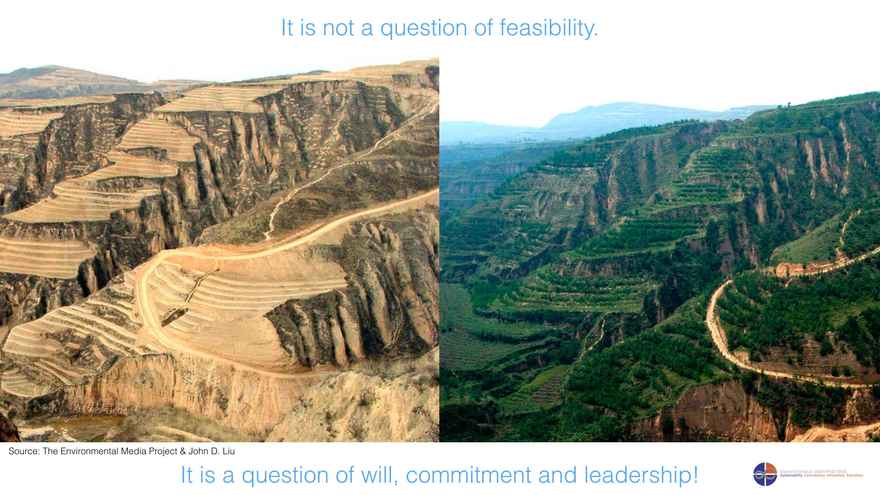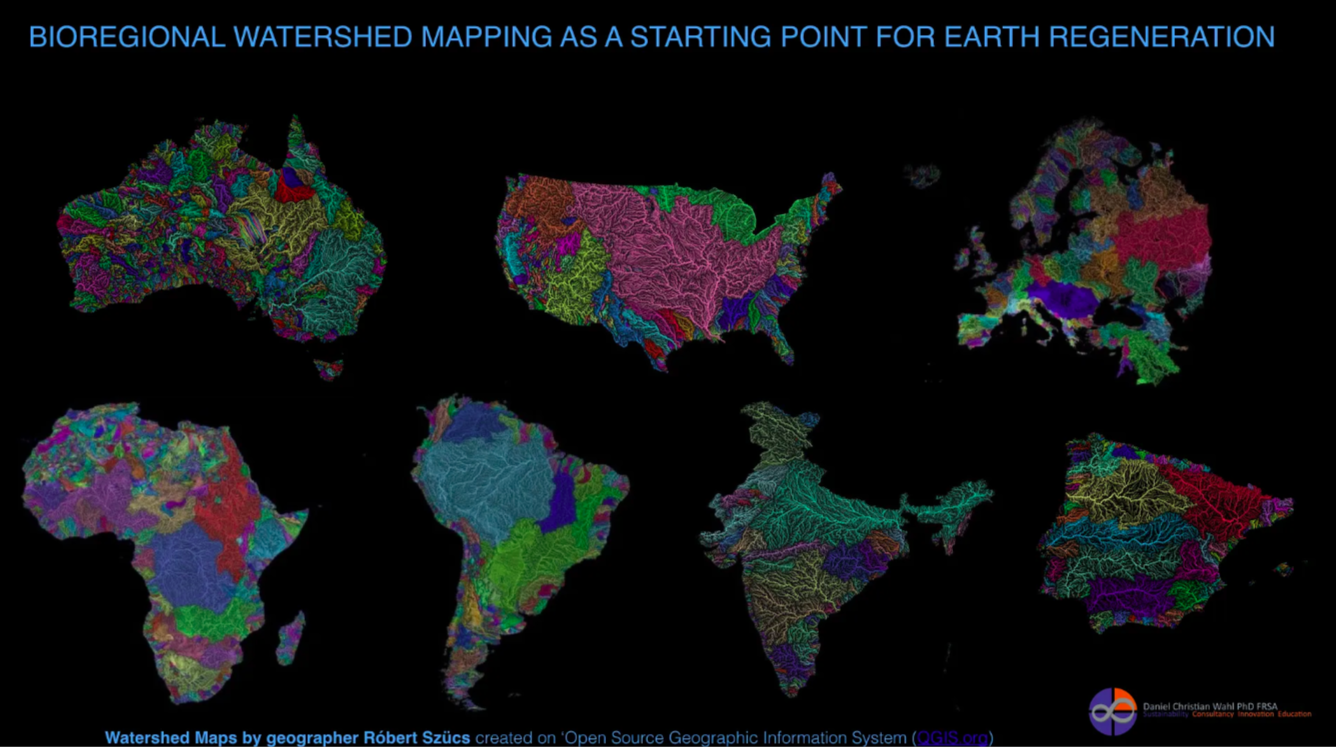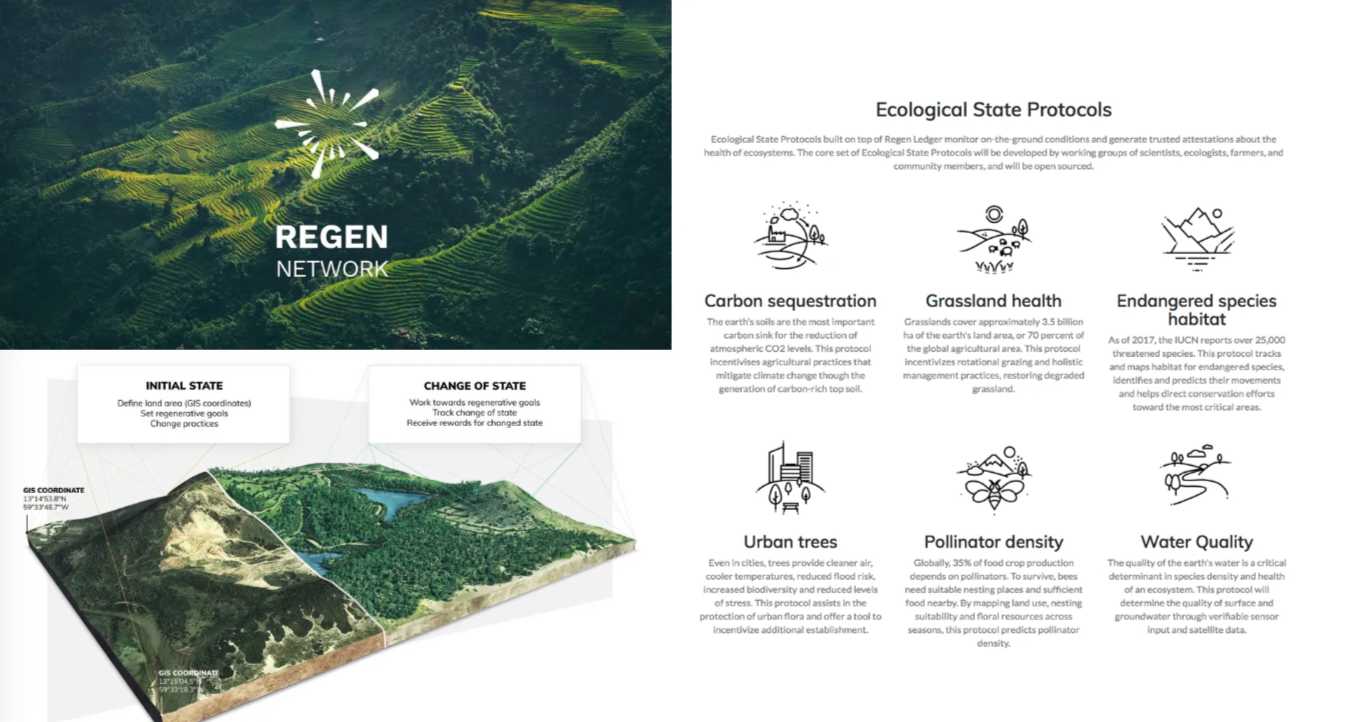Restoring Ecosystems in the Century of Regeneration

This is a Transcript of Daniel Wahl’s ‘Findhorn Talk’ on ‘Human and Planetary Health: Ecosystems Restoration at the dawn of the Century of Regeneration’; October 13th, 2018 originally written on his Medium page.
… These [above] are pictures of the Loess Plateau in China. John D. Liu, who was here at Findhorn for the New Story Summit, documented this change. Over fourteen years the Chinese managed to turn an arid desert into a fertile and productive landscape.
It is a very large area South-East of Beijing. We are talking thousand of square kilometers.
We can heal the planet. We can heal ecosystems. We can fit back into the community of life and create — bioregion by bioregion — a more abundant place.
"We can move from competitive scarcity to shared abundance"
These [below]are wonderful images created by a geographer called Robert Szúcs who basically maps the river-systems of the planet. Once we start moving into a bioregional world — regenerating bioregion by bioregion — these kinds of maps will be very useful.
The bioregional approach fits humanity back into natural patterns rather than the other way around.
There is an organisation in the Netherlands — called Commonland — that developed a strategy to finance large scale and long term ecosystems restoration and how to make it viable.
Commonland has set up four pilot sites around the world where they are working with regional landowners to transform entire regions. One of them is the altiplano near Murcia in Spain.
John Liu, who documented the change at the Loess Plateau, has started an organization called the ‘Ecosystems Restoration Camp Foundation’ and the ‘Ecosystem Restoration Camp Cooperative’. Their work is basically to invite young people — or anyone — from around the world to come and learn how to become restorers of ecosystems in that place.
There is an organisation call the Regen Network, who are working on using remote satellite images as well as sensors on the ground to really look at the before and after of regenerative work. Once you can quantify and prove that you have had a regenerative effect there are ways of finding funding linked to that. The Regen Network is also working with block-chain technology and crypto-currencies (liquid tokens) to create large funding streams to support regenerative practice.

Basically we need to shift out of fossil carbon. Our entire material economy is fossil fuel dependent. We need to create a new type of material culture that is biomaterials based and sequesters carbon into everything we use.
There is also an organization called Regeneration Interational that links farmers from around the world who practice regenerative agriculture.
There is some hope. There is a silver-lining to the dark storm clouds we are facing. If you really want to stop watching the bad news have a look at the website of the Buckminster Fuller Institute. My friend David McConville created a google map on which each point you can click on pops up a little video of a story happening in that place of people already doing regeneration work on the ground.
"So I invite you all to love life. Love the opportunity of being alive. We don’t know whether we are going to make this. We are undergoing a species-level rite of passage right now. Rights of passage require that you are not allowed to know for sure whether you are going to make it, otherwise they don’t work"
We are facing a knife’s edge, between a future that is abundant of collaboration with [more than human] nature, or decades of decline and unspeakable, unthinkable situations that we want to avoid. The way to start navigating the path towards the positive is to be in love with life and each other every day a little bit more.
Thank you!
[If you want to watch the whole talk, it is 26 minutes long, links below!]


0 comments
Leave a comment